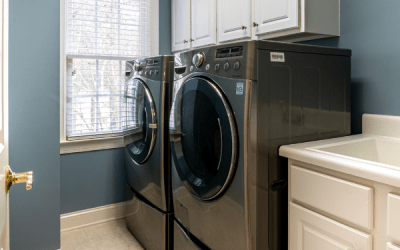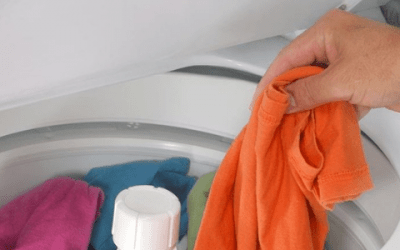Washing machines have become an indispensable part of our lives and selecting the right one can be a huge task. Selecting a washing machine that suits your need will depend on your ability to analyse some factors and things to consider before buying.
#1 What type of washing machine would suit my household?
Type of washing machines: Automatic or Semi-automatic?
Automatic machines do everything themselves: after you choose the wash program, the machine will fill water itself, go through the wash cycle, rinse, drain the water, and then do the spin cycle to remove all the excess moisture – all in the same drum.
The semi-automatic type needs to be manually filled with water before the wash begins (and then drained and filled with water again for the rinse cycle). You will also have to transfer your clothes from the wash drum to the spin compartment. In this way, you have more control over the washing process, but it is also more labour-intensive. These machines tend to have fewer special features and cycles than automatic washing machines, which is why they are also more affordable.
Type of washing machines: Top Loading or Front Loading?
Front-load and top load washing machines have the same basic job – that of washing your laundry. Beyond that, though, there are quite a few differences between the two types.
If you have continuous water supply, you may prefer going for one of the front-loading models as the wash quality is better and they are relatively more energy- and water-efficient. Although about 10 to 20 per cent costlier, they are worth considering. Avoid going for machines loaded with complex features and selections as these may only end up complicating the washing. For better cleaning of heavily soiled clothes, prefer to use soak mode during prewash.
If you want to conserve water and electricity, you should know that front loaders use less water than traditional top loaders, which have to fill up entirely for the wash and rinse cycles. Opt for an Energy Star model, which reduces electricity and water use by about 20 per cent and 35 per cent, respectively, over non-rated models. The best front loaders clean better and are gentler than the top loading washing machines while using less water. Front loaders take longer than top loaders but spin faster, extracting more water and trimming dryer time.
Energy efficiency and consumption of water are important factors to consider when purchasing a washing machine. For example, fully automatic washing machines consume between 100 and 150 litres of water for full load for ideal one wash + two rinse.
#2 What are the Advantages and Disadvantages of a Top loading Washing Machine?
Advantages
- A top loading machine is cheaper to buy as compared to a front-loading one.
- The drum door is located on the top of the machine, so you don’t need to worry about the extra space that is needed to open a front-loading machine.
- The design of top loading machines is simple and easy for first-time users to understand. There are fewer mechanical parts to get damaged or malfunction. However, it may be noted that top loading machines are becoming a lot more sophisticated and the latest models come with a full range of wash programs and built-in extras.
- The machine is quieter because the drum does not usually spin fast in a top loader.
Disadvantages
- A top loading machine uses more water than a front-loading one. The top loading drum must be completely filled with water during the wash cycles. This will lead to a larger household water bill.
- Top loading washing machines tend to have fewer features and functions – if these are important to you, then take that into consideration.
#3 What should be the capacity of the washing machine that will be sufficient for my family size?
Home-use washing machines in India have a range of 5 kg to 10 kg. For a family of two or those living alone, a 5 kg+ machine is more than sufficient. However, a bigger family will need a higher-capacity machine. Even a family of four, especially with small children, will require a high-capacity washing machine as children go through several pairs of clothing in a single day.
#4 How much space do I have to keep the washing machine?
Measure the space and allow at least six inches behind the washing machine for water hookups. Measure the doors to your home to make sure a new washing machine can fit through them.
#5 How good is the after sales service and spare parts availability?
But there is another side to the picture. It has been observed that when the machine goes out of order, the spare parts of the model are no longer available because a new model has already replaced the earlier one. This is an area that manufacturers should take up as a matter of priority, especially in view of the problems consumers are facing and complaining about. How about designing the washing machines in a way that not only secures the availability of spare parts but also makes the machines easy and cheap to repair?
#6 How much electricity bill I will end up paying?
Energy labeling
Washing machines may carry energy-efficiency star ratings based on key performance parameters covering washing efficiency, water consumption, energy consumption, etc. Participation in the star rating labeling program is voluntary at present. Manufacturers declare motor rating in watts, although actual energy consumption will depend on wash load. During our survey, it was observed that most brands did not declare water consumption despite this being an important parameter.
Is installation and delivery of the washing machine free?
Ask for free installation as it is generally included in the unit cost. Also insist on free home delivery while placing the order.
Features to Consider while buying washing machine
Some brands claim to be powered by a 6th sense technology that adjusts water level, wash timings and detergent doses based on fabric type and load, while some others claim to be equipped with hot-wash technology with an inbuilt heater that not only removes tough stains but also eliminates dangerous bacteria from the clothes and protect you from skin diseases. Other features that are claimed by various brands include digital display, rat mesh, child lock, fuzzy logic, easy-to-use control panel, magic lint filter, automatic tub cleaning, express wash, delay start and auto restart. However you should consider the following for sure.
What is the material of the drum/tub?
The tub can be made of plastic, porcelain-enamel or stainless steel. The first two are cheaper. Plastic tubs are more durable than enamel ones, which can chip and rust. Stainless steel tubs are the best as they are the most durable and can withstand high spin speeds.
How many wash programs are there?
Most machines have preset wash programs, such as ‘gentle wash’ for delicate clothes, and water-level options. You can customize and save favorite settings. These can be adjusted through rotary controls, a touchpad, or a touchscreen. The first type is the cheapest.
Do the wash settings include time delay and pre-soak?
Time delay allows you to load the washing machine and start it later. This is useful if you want to avoid the noise at certain times.
Do I need temperature control?
If the washer has an inbuilt heater, this feature will help adjust the temperature of the water. This can prove useful in winter. Besides, hot water cleans clothes better. Some of the machines have steam setting, which helps fight dirt and stains well.
Does the machine have ‘Auto Restart’?
It restarts the machine from the point when the cycle was interrupted.
Is automatic drainage ‘must have’ for me?
This feature is quite common in automatic machines and not so common in semi-automatic machines.
Like all other gadgets do I need to have Child Lock in the washing machine?
A self-explanatory feature, this helps in keeping the washing machine safe from children’s activities.
Do I need wash load sensor?
It enables the machine to detect load volume and fabric type, and adapt the washing process. The load sensor also controls the amount of water used to match the load size.





